-
Administrator

Article: Family Racer - The Ware Family Camaro
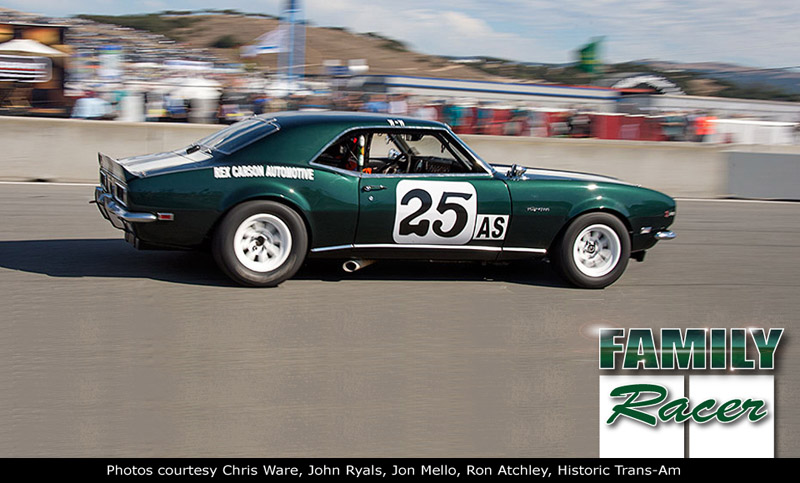
Many consider the true glory days of the SCCA Trans-Am series to be those of its early years, from 1966 through 1972. Much of the reason for this was because, not only were the cars directly related to those race fans could own and drive on the street, but also because this was the era in which all four US auto manufacturers got behind the series. Indeed, icons such as the Z28 Camaro, Boss 302 Mustang, AAR Cuda, T/A Challenger, Pontiac Trans-Am, among others, exist purely because of the Trans-Am series.
But while its easy to wax lyrical of the impressive factory support the series boasted during this period, the Trans-Am really only survived thanks to its many unsung heroes, the independents who jumped on board to support this multi-million dollar travelling road-show when it came to town.
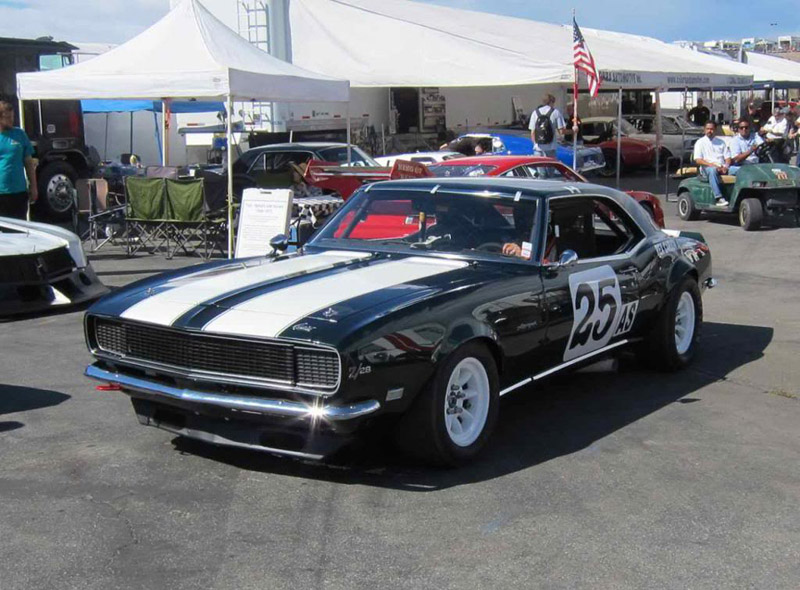
1970 was the year the Trans-Am finally received full participation from each of the ‘big four’ auto makers, and factory race teams from Ford, Chevrolet, American Motors, Plymouth, Dodge, and Pontiac all went to war to fight for the honour of their respective brand. But even in 1970, the number of factory race cars on the grid barely hit double digits, and indeed, only Ford, Chevrolet, and American Motors committed to full-time two-car squads throughout the season, with others such as Plymouth and Dodge only doing so sporadically.
Fact is, the Trans-Am series lived, grew, and prospered thanks to the support of hundreds of small independent teams. These were the weekend warriors, the guys and gals who held down day jobs, and spent their weekends racing predominantly in local SCCA A/Sedan and B/Sedan competition. And a couple of times a year, when the Trans-Am came to town with its million dollar race teams, professional drivers, and bulging race purses, the independents jumped on board to test themselves against the big boys, and maybe pick up a few bucks prize money.
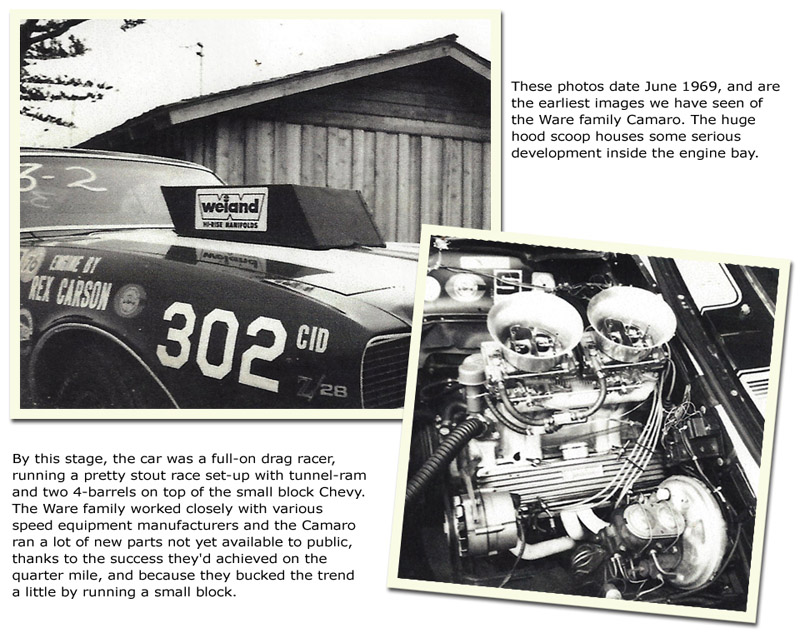
There were a great many stand-out independent teams running A/Sedan and limited Trans-Am programs during this period, and among them was the hugely enthusiastic Ware family, based out of Leucadia, California, who raced a beautifully presented 1968 Z28 Camaro. The team combined the whole family, plus close friends, and really typified amateur racing of the era.
The Ware family team was made up of John Ware Snr (known to friends and family as ‘Jack’), his wife Helen, and their sons Johnny and Chris. This truly was a family of petrol-heads.
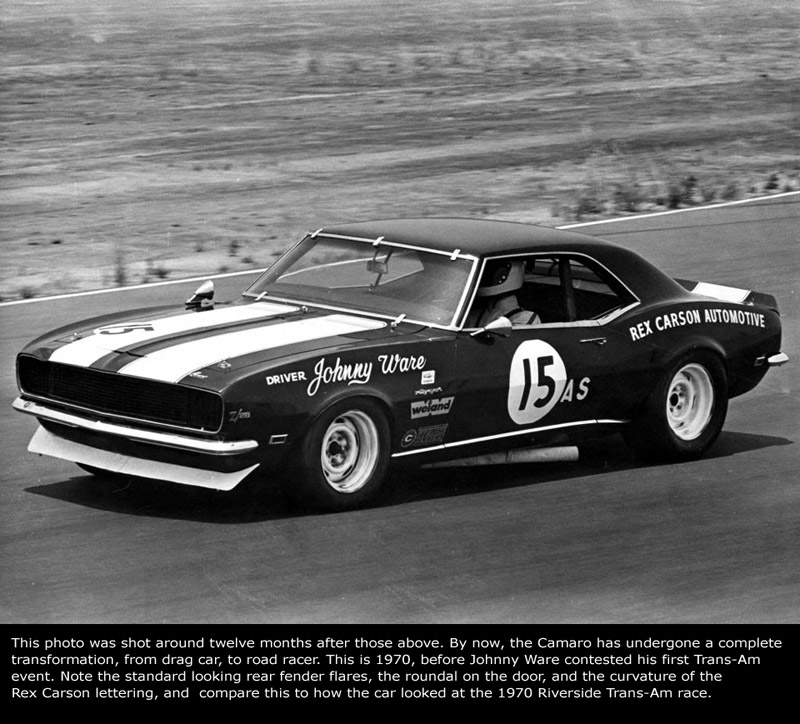
It was Jack and Helen who ordered and bought the handsome British Green with white stripes 1968 Z28 with Rally Sport package from Courtesy Chevrolet, in San Diego. Helen chose the color, which was a one-year only offering, for 1968. It didn’t stay standard for long. Almost immediately, Jack began tinkering. Although it’d go on to spend most of its life as a road racer, it was on the ¼ mile drag strip the Camaro got its first taste of competition.
-
Administrator

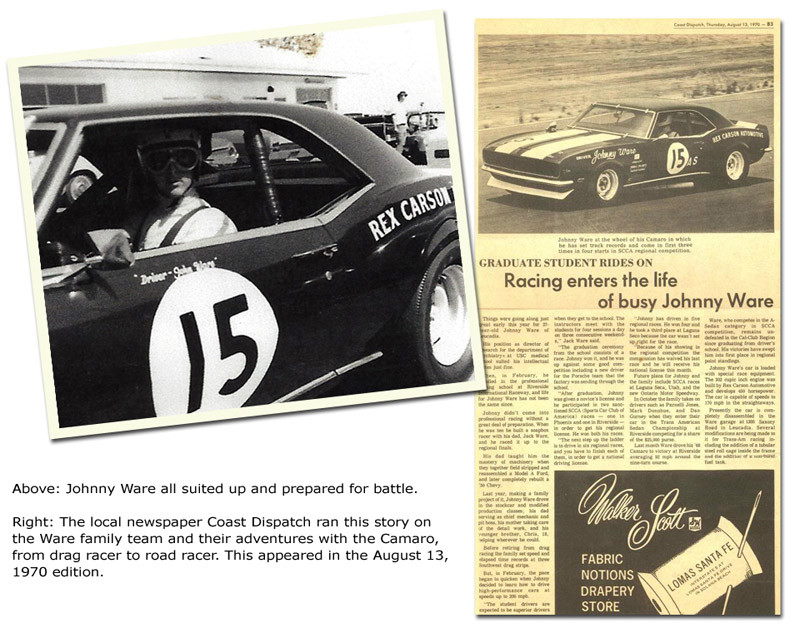
Johnny Ware was in his mid-twenties at the time, had left home, and was working as director of research for the department of psychiatry at USC medical school. Chris Ware, still in his teens, lived at home with the folks, and recalls the arrival of the new Z28. “When my parents took delivery of the Z28 it was the family car”, explains Chris. “My older brother (Johnny) and sister were no longer living at home, so it was just me and my parents. My brother owned a ‘67 Shelby Mustang (GT500) with the 428 factory dual-carb set-up. Nice car. Long story short; after all the smack-talking between my Dad and brother the cars were put to the test. Friday night Carlsbad Raceway drag strip was ‘run-what-you-brung’ night for all the street racers. After many attempts the Mustang was close, but no cigar. That is where it all started. As they say ‘the rest is history’”.
Virtually from the day it drove out of Courtesy Chevrolet, right through to around late-1969, the Z28 evolved continuously into a stout drag car, with Johnny Ware at the wheel, while the rest of the family divvied themselves up into various crew roles, joined by John Ryals. “We did the drag racing thing for a while, and learned a lot”, recalls Chris. “The car held the NHRA record for C/Modified Production for most of that season. It would seem that most were using the big block cars for drag racing, so the small block racers that had good set-ups were doing well. This is where the (performance engine builder) Rex Carson connection happened. He had a dyno set up and a lot of drag racing connections, not to mention he was a sharp cookie and knew his stuff. Rex connected us with the Weiand intake manifold people. They were very interested in us because we were using the small block, so we did testing and development for them. We got free manifolds to try long before the final product hit the shelves for the general public. This was good, as it gave us an edge on the competition. This also happened to us with Crane Cams, Hooker Headers, as well as with Edelbrock”.
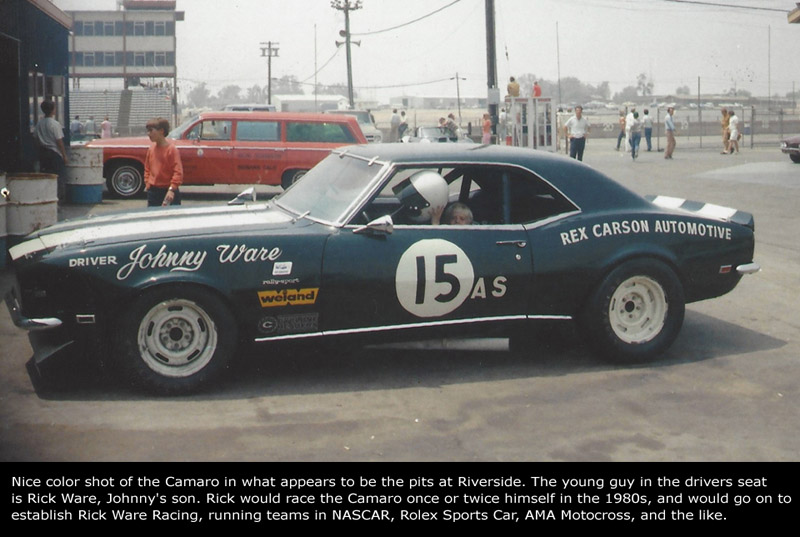
The ongoing development throughout 1968 and ’69 eventually resulted in a staunch Weiand tunnel-ram set-up topped with duel four-barrel carbs sprouting up through a hole cut in the hood. A large box-style scoop usually housed the carbs.
And then, the Ware team suddenly changed tack, and took a completely new route. At the end of 1969, having set speed records in both stock and modified production, and with momentum in full swing, the team stepped away entirely from ¼ mile drag racing, in favour of road racing. And with that, the modifications made to the Z28 for its furious short, fast, straight-line bursts, were unstitched, and the car converted for light road racing duties.
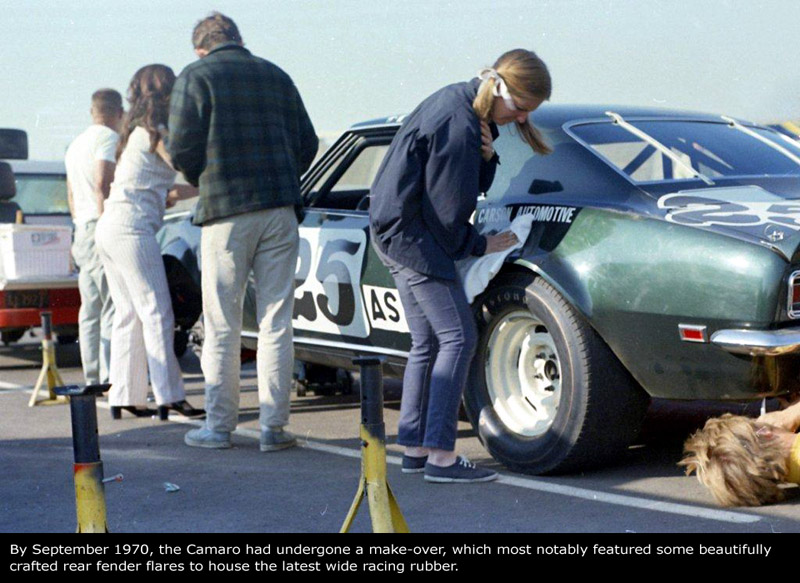
Johnny Ware enrolled in the SCCA professional road racing driving school at Riverside International Raceway in February 1970, eventually graduating two months later. The Camaro was suitably modified, with the fitment of a bolt-in half roll cage. As part of the graduation, Johnny was required to contest a race, which he duly won. A novice licence was awarded, and he entered two SCCA races, at Riverside and Phoenix International Raceway. From there he ran six regional events to gain his national licence, and it was after this the Camaro was sent to Dick Guldstrand’s race shop and rebuilt to full SCCA A/Sedan specifications, which included the fitment of a full, welded-in rollcage, Corvette brakes, Koni shocks, and new M-21 Muncie gearbox, while Traco Engineering built a 302 cu.in motor for road racing duties, duly extracting around 450 horsepower (Rex Carson would maintain the motor).
The Camaro emerged from its rebuild looking suitably stunning, with the Ware family justifiably proud. It retained its factory British Green paint with twin white stripes, while a set of white painted 8 inch wide Corvette steel wheels added to the neatly off-set colors, as did white roundals, and white lettering and front spoiler, while a pair of white painted exhausts bombed out each side beneath the doors.
-
Administrator

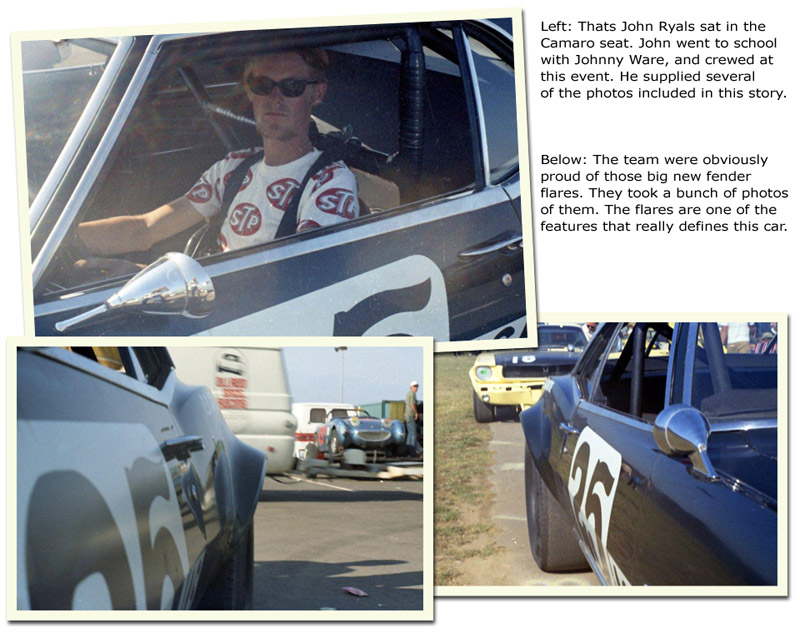
Interestingly, the Z28 retained all its factory trim, including side markers, rear bumper over-riders, chrome-ware, and badges.
Initially, the fenders remained almost stock, with only gentle rolling of the lips to allow for wider race tires. But before the 1970 season was out, they’d been modified to fit the widest rubber Firestone could squeeze around the A/Sedan and Trans-Am maximum allowable 15 x 8 inch wheels. And as such, attractive flares were fabricated, front and rear, with the rears being particularly protrusive. Retaining the high level of presentation of this car, the factory lip was retained on the outer edge of the now quite meaty flares.
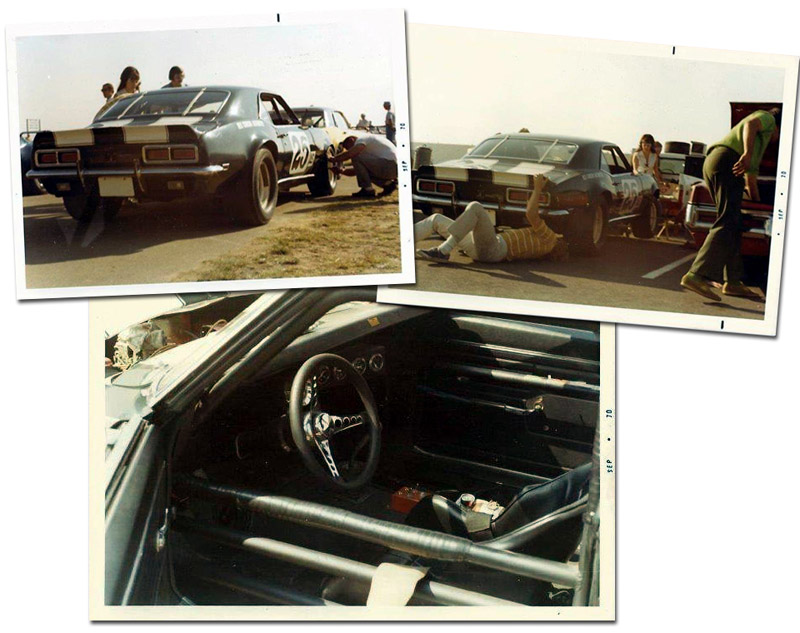
At some point, likely in late 1970, the team were able to acquire a pair of full negative camber rear-ends, from Jim Hall, who’d run the factory Chaparral Camaros in the 1970 Trans-Am series.
The team ran the Camaro in West Coast SCCA regional events, mostly at their local track, Riverside International Raceway, and they acquitted themselves extremely well, given their previous lack of road racing experience. They also ventured to Phoenix International Raceway, Laguna Seca, and Ontario Motor Speedway, while their biggest challenge for the year was contesting the 1970 Trans-Am Riverside race, in October.
In a field of 35 cars, Johnny qualified 23rd in his very first Trans-Am race, and finished 15th, seven laps down on race winner Parnelli Jones’ beat-up Bud Moore Mustang. The 1970 Riverside Trans-Am race was heavily populated with factory teams, out to impress. This was the last race of the season, and contracts were up for renewal. Two cars were entered each for Ford, Chevy, AMC, Dodge, and Plymouth, and factory cars claimed the first eleven places on the grid, and seven of the top nine finishing positions in the race, with the well-funded Roy Woods Racing team (which would go on to run the factory Javelin program in 1972) filling the other two spots.
Johnny Ware collected $300 for his 15th place finish.
For 1971, the Camaro underwent a complete rebuild and substantial transformation, as Chris Ware explains: “We got involved with a fellow Trans-Am driver/owner named Mark Waco, his business was located in Tarzana, near Burbank. The company name was Mark 2 Enterprises co-owned by Mark Ellis. They did repair and fabrication work and tune-ups, as well as all other types of auto related work.
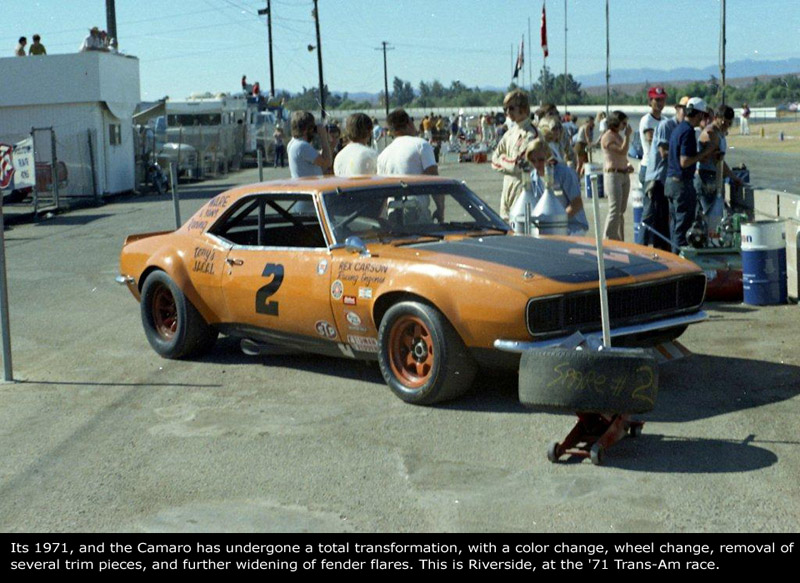
“We needed a larger place to work out of as we were out-growing the garage in San Diego (home base). So the decision to create a ‘team color’ came to be. The color was a Porsche color (my dad hated the German cars) and much discussion on the choice happened”. Waco himself had purchased one of the Jim Hall Camaros, which too was painted Porsche orange.
The Ware Camaro was placed on a diet, with all non-essential bodywork pieces being removed. In addition, magnesium wheels were fitted, front and rear, with 6-spoke American Racing wheels (sometimes referred to as TA70s) at the front, and Minilites at the back. The fender flares grew a little more, particularly at the rear, as although maximum wheel size rules remained the same, tires kept getting wider.
-
Administrator

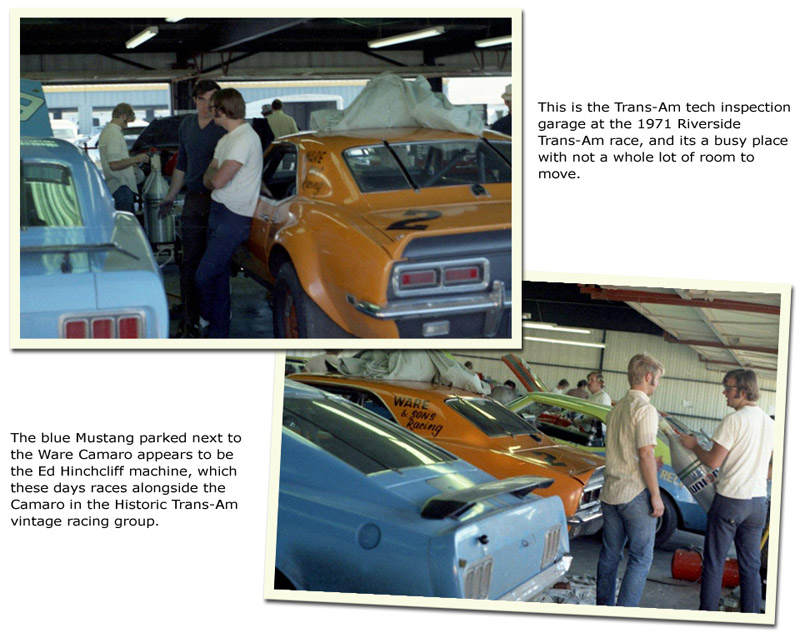
Once again the Ware family Camaro contested West Coast SCCA regional events, as well as the 1971 Trans-Am race at Riverside. By 1971, the Trans-Am series was faltering, with the lions-share of the factory teams not having their contracts renewed, as pony car sales, and sales of performance cars in general, slumped. Now only American Motors remained, with the factory Penske team opting to run a single Javelin for Mark Donohue. But there were still plenty of top quality teams involved, including Roy Woods’ AWA team, who had a pair of 1970 Penske Javelins up-graded to ’71 specs.
Johnny Ware qualified 11th this time out, and came home 12th in the race, picking up $600 in prize money.
The team partnership with Mark Waco was short-lived, and by the end of the 1971 season, the Ware family were winding down their racing commitments with the Camaro. With the SCCA Trans-Am clearly on a downward spiral, Johnny Ware opted to try something different, and switched to the NASCAR Grand American series, by purchasing a 1970 Camaro roller from Jim Hall.
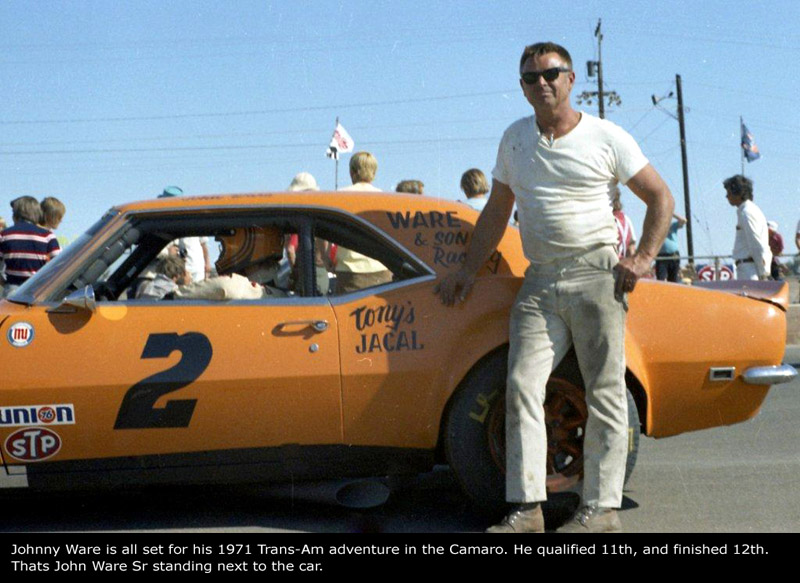
The Z28 did make sporadic appearances throughout the 1970s. It contested the 6 hour 1979 Los Angeles Times Grand Prix endurance race at Riverside, which combined part of the World Endurance Championship, Winston GT, and IMSA GTO and GTU. The Ware Camaro was entered in IMSA GTO, with Johnny at the wheel. Against the latest high-tech, lightweight, turbocharged racers from Porsche and BMW, the old Camaro was understandably uncompetitive, qualifying 39th from 54 starters, and failed to go the full race distance. This was merely an exercise in enjoyment, bringing the old racer out for some fun, as was the Trans-Am race at the 1980 Budweiser Grand Prix event, also held at Riverside. Johnny qualified the Camaro 13th, but failed to start the race.
Johnny’s son Rick, a keen petrol head himself, drove the old racer at the 1983 Riverside and Caesars Palace Trans-Am races, scoring a 16th place finish at Riverside, before establishing a successful career in his own right, firstly as a driver in SCCA and NASCAR, and then focusing purely on team ownership with Rick Ware Racing (RWR), running cars in the NASCAR Sprint and Xfinity series’, as well as Craftsman Trucks, Modifieds, the Rolex Sports Car road racing series, and AMA Motocross and Supercross.
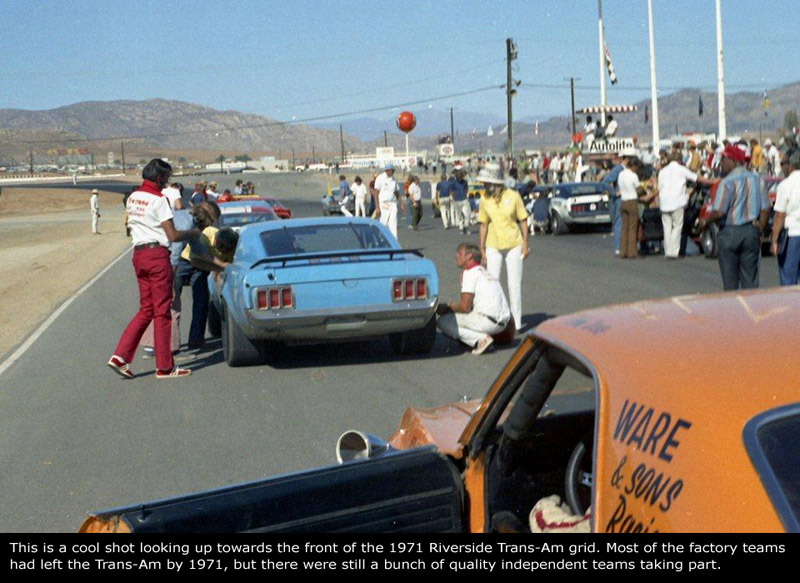
In the mid-1980s, Johnny Ware decided to sell the Camaro, and it found a new caretaker in February 1986. It passed through various owners, including Doug Hooper, Anthony Vecchia, Peter Boyd, Craig Connely, and, eventually, Karman Cusack, from Colorado. Throughout this period, it continued to make SVRA appearances, largely unchanged from its 1971 guise, including its orange paint. It contested races at Sebring, Road Atlanta, Pocono, Watkins Glen, Mid Ohio, VIR, and Road America, among others. It was Karman, however, who purchased the car with the intention to bring it back to its 1970 Riverside Trans-Am guise, so it could be raced in the fast-growing Historic Trans-Am vintage racing group.
Despite it now well and truly showing its age, the Camaro had really changed little in the last four decades and just beneath the skin it was still much the same guise in which it contested that 1970 Riverside Trans-Am race. This was a true survivor. However, Karman made the decision to have it fully restored. Indeed, he was somewhat at-odds with himself for doing so, as he enjoyed the patina of the car so much. Slightly battle-scarred it was, the Camaro still wore the orange paint it adorned in 1971. Karman had Cobra Automotive, in Wallingford, Connecticut, carry out the work.
-
Administrator

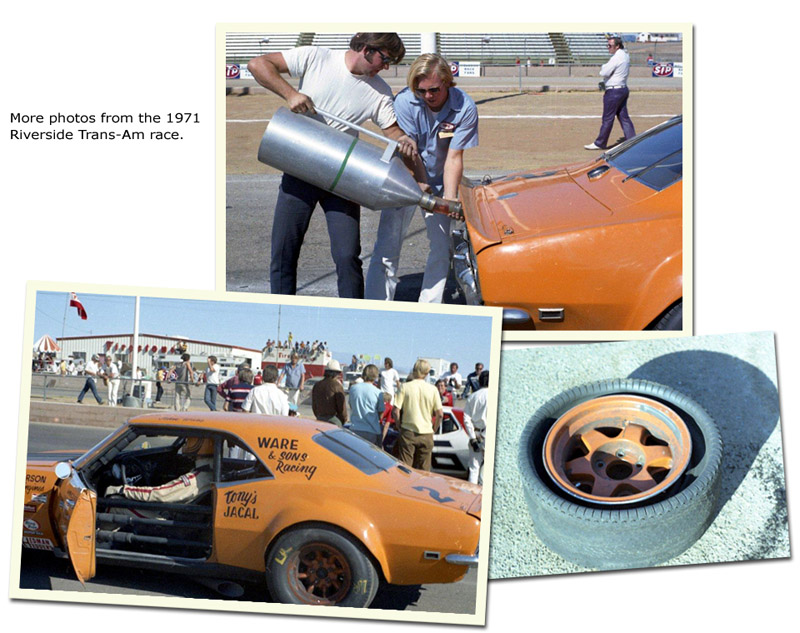
The body was stripped of its paint, while care was taken not to touch the interior, other than some cosmetic work on the instrument cluster. With the paint stripped, the rear quarters were removed, and replaced. The big rear fender flares the car wore meant there wasn’t a whole lot of original sheet metal left to work with, so complete replacements were deemed the best option.
Once in place, the team at Cobra then began the intensive job of replicating the rear flares as they appeared at the 1970 Riverside Trans-Am race. This required carefully hammering and stretching the metal around the wheel opening, until the correct size and shape was achieved. The flares on this car still retained the factory lip, which Cobra then had to replicate. Then they were cut off, run through an English Wheel until they were perfectly smooth, and welded back on the car.
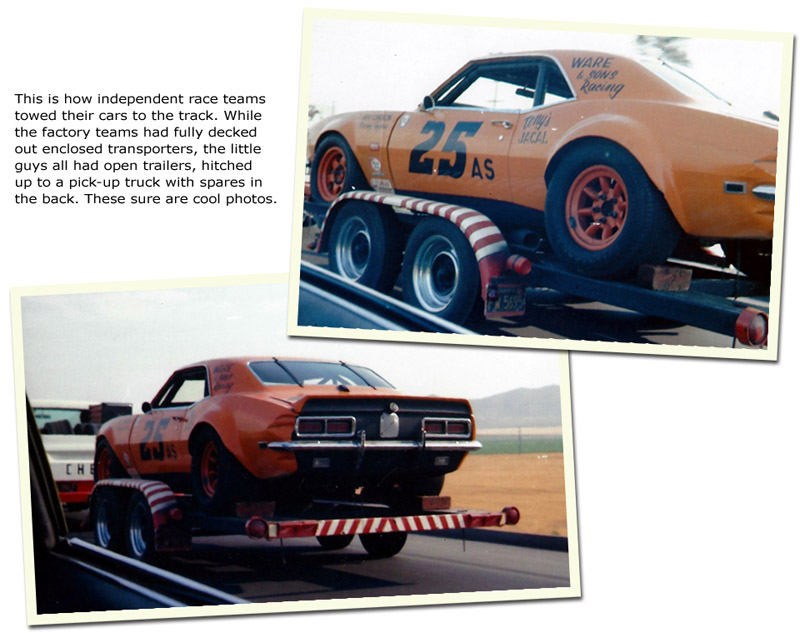
Up front new fenders were fitted, and again the wheel openings were flared to replicate those on the car in late 1970. A similar procedure was required as per the rear, but without the factory lip. Once done, the car was really beginning to come to life once more, and looked superb.
Other areas of the body required attention, but this was all largely cosmetic, and Cobra Automotive were able to retain most of the original factory steel.
The Ware family had Traco build their engines for them once they converted the car from a drag racer to a road racer. So for the restoration, Karman had the motor pulled, the sub-frame cleaned up and repainted, and likewise the firewall. A correct 302 cu.in Chevy was then built, using a 1971 date coded ‘010’ 4-bolt main block, and correct 1969 ‘camel hump’ heads. It was then painted the correct Traco grey, and topped with a single Holley. Amazingly, the Camaro still had its original cowl plenum air cleaner lid, which was freshened, and refitted.
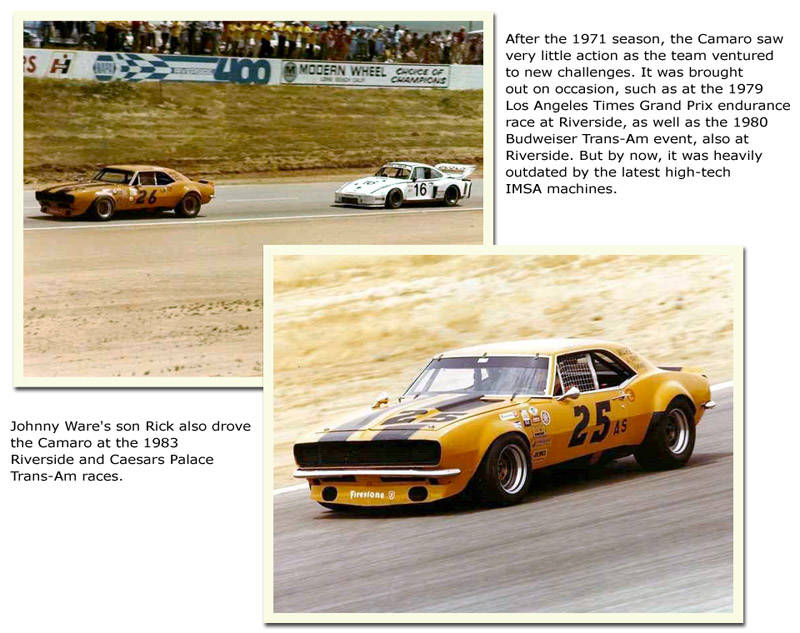
Backing the small block Chevy is a Borg Warner T10 4-speed transmission, while at the rear remains one of the two Chaparral negative camber rear-ends purchased from Jim Hall in 1970. The Camaro still rides on the Koni shocks it was fitted with in 1970. Brakes are the correct Corvette J56 items the majority of GM Trans-Am cars wore in period.
Once the body work had been completed, the Camaro was resprayed in its factory British Green, with twin white stripes, and all the smaller sign writing applied, as it appeared at the 1970 Riverside Trans-Am. In addition, it has also been fitted with all its correct factory trim.
Although this car was fitted with Corvette steel wheels when it ran the 1970 Riverside Trans-Am (and for all of 1970), Karman made the decision to fit it with white painted magnesium Minilites. A minor stray from its exacting appearance, there is no doubt the car really does look superb with the Minilites bolted on. Besides, the team did switch to Minilites for 1971.
-
Administrator

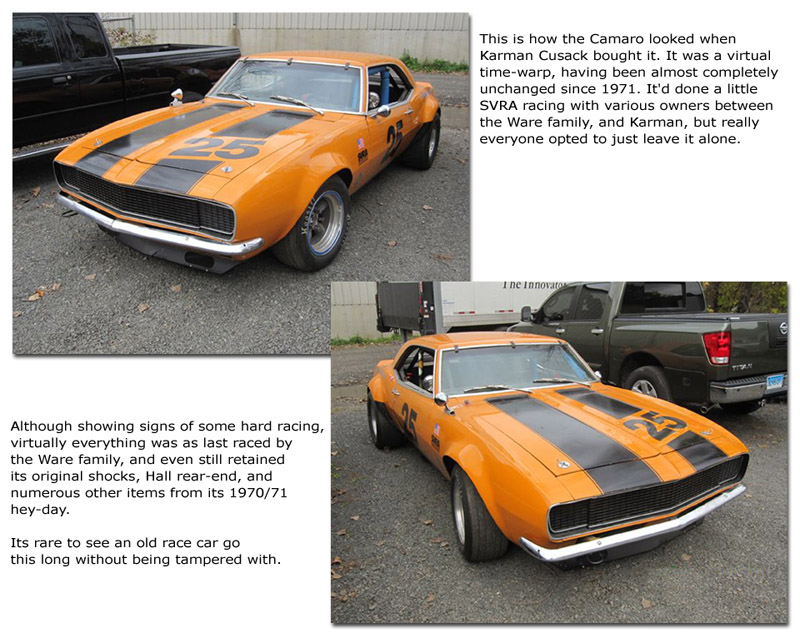
The restoration was completed just in time for Karman to achieve his goal of racing with the Historic Trans-Am group for the first time at the Monterey Historics, in August 2013. Karman was able to get in a few laps testing prior to the event, and was overall very happy with the car. The fact the Camaro was never butchered, and retained virtually all its under-pinnings, suspension, and set-up throughout its life meant it was more or less already on the money, set-up wise, having run all those SVRA events. At some point the rear track had been widened, using wheel spacers, which Karman found really helped the handling a lot, and made the car very forgiving. However, he decided for the sake of accuracy to remove these. For his race at the Monterey Historics, Karman opted to start off the rear of the grid. But overall, the car ran great.
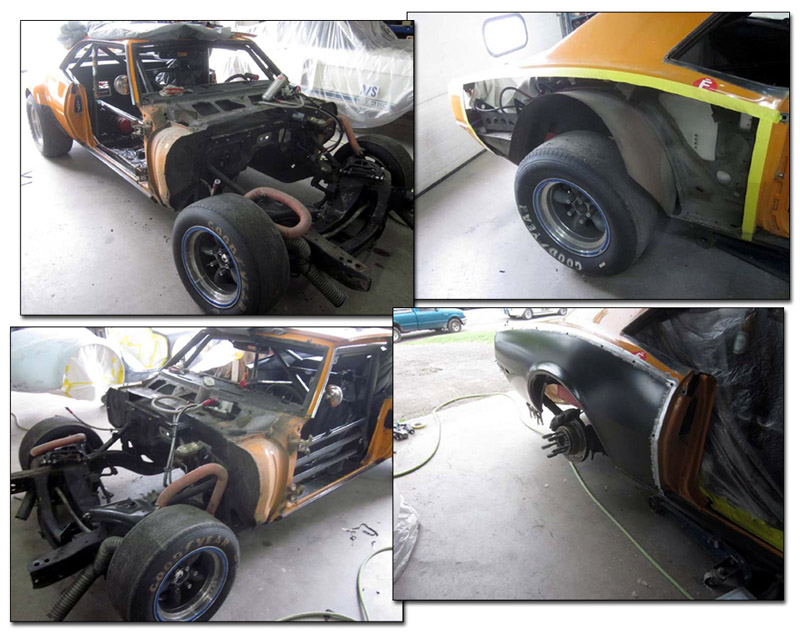
Karman then made the decision to base the Camaro out of the West Coast for the 2014 season, which is where the bulk of Historic Trans-Am cars live. As a neat coincidence, the Ware family were also based out of the West Coast, so in a way, the Camaro has come home. After running both the 2014 Sonoma Historic Festival and Monterey Historics, Karman then decided to sell the Camaro, and it found a new owner in Ron Atchley.
Like Karman, Ron is a genuine enthusiast, and genuinely excited about owning this historic old racer. He has since got in touch with Chris Ware, Johnny Ware’s younger brother, and has kept himself busy filling in the gaps of this cars history, and of the Ware family racing team in general. Chris Ware has kindly supplied Ron numerous old racing photos, Ware family newsletters, and receipts for purchased parts from the likes of Jim Hall, and others.
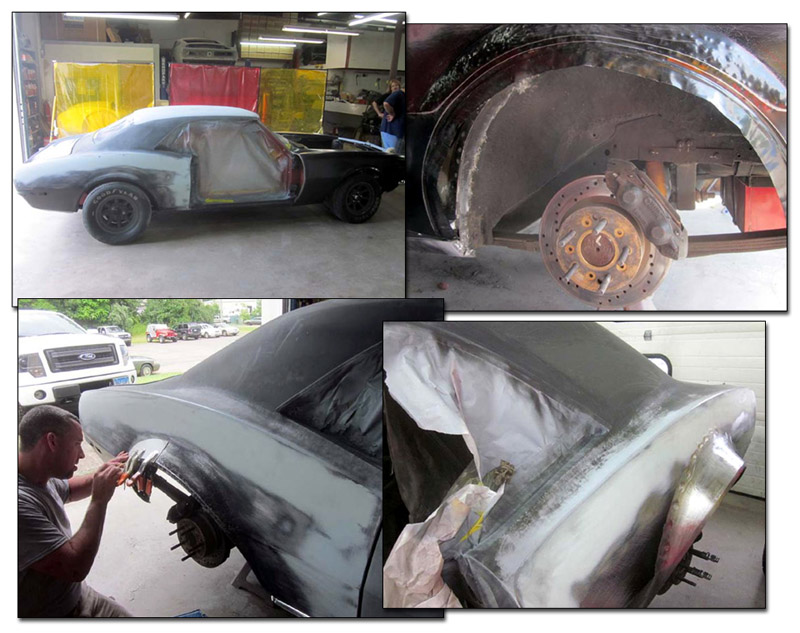
Since buying the Camaro, Ron has gone right through the car, rebuilding many of the mechanicals and the electrical system, along with general detail work, as well as adding a GM cross-ram inlet manifold. The Ware family bought a similar manifold off Jim Hall in period, but never fitted it to the car, as the SCCA had introduced a rule for 1970 stipulating only single 4-barrel carbs were allowed. Ron gained permission from the Historic Trans-Am group to run the cross-ram.
Of course, the real enjoyment of owning an old racer comes from actually getting out and racing it, and Ron has been doing so with the Historic Trans-Am group since purchasing the car. Historic Trans-Am is, as the name implies, a specific vintage racing group established for owners of genuine SCCA Trans-Am race cars, that contested the series from 1966 through 1972. Only the actual cars are eligible; no replicas. And with a great mix of original factory and independent survivors from the pony car wars, Historic Trans-Am relives the epic battles that took place in period, albeit, at a slightly more sedate pace, and without the aggressive fender-banging driving the original series became famous for. After all, these cars are, understandably, now highly prized, and very expensive antiques.
And Ron Atchley, the enthusiast that he is, and this very special old racing car originally raced by an equally enthusiastic family, are a great addition to the group.
-
Administrator

-
Administrator

-
Semi-Pro Racer

A great story Steve and as usual very well researched. Great to see that it has survived.
-
Semi-Pro Racer

Great read Steve, I love the period photos particulary the car painted in the orange.
-
Administrator

Thnaks guys, glad you enjoyed the read. Incidentally, John Ware snr hated the car in its orange colour.
-
Semi-Pro Racer

Yes, the British Green was a one only year colour and really suited the 68 Camaros. The flares are awesome....hint hint !!!
-
Administrator

Yeah the flares look neat. A lot of work went into making those. But they really make the rear of the car look meaty.
-
Administrator

One thing I need to find out about this car is whether they shortened the rear axle length. The very trick rear end was purchased from Jim Hall at Chaparral, built for the factory 2nd gen Camaros Hall ran in the 1970 Trans-Am series. Gen 2 Camaros have a 1 inch wider track than first gen cars. If the rear end was left standard length, this may explain why those flares were required on the back of the Ware Camaro.
-
Semi-Pro Racer

You ar correct Steve, it is wider. When I put the replacement 12 bolt in the Tulloch Camaro all that was avalible was a Chevelle diff with the correct ratio and LSD. It was 1 inch wider but my wheels were American Racing 8.5 inch Daisys so made no difference.
 Posting Permissions
Posting Permissions
- You may not post new threads
- You may not post replies
- You may not post attachments
- You may not edit your posts
-
Forum Rules




 Reply With Quote
Reply With Quote

